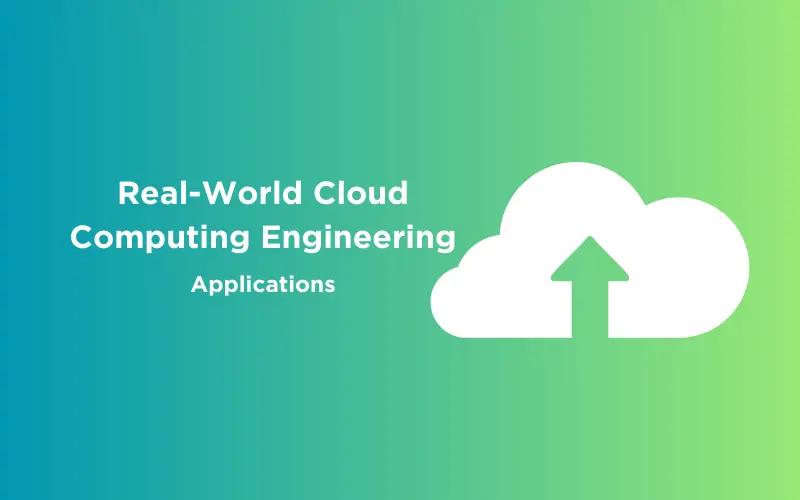
7 Real-World Cloud Computing Engineering Applications
Mar 06, 2025 11 Min Read 7119 Views
(Last Updated)
Think about your smartphone, the apps you use, and even the movies you stream online – they all rely on something called “cloud computing.” It’s not just a fancy term; it’s a technology that’s making our world smarter and more efficient. And one field where it’s making a big difference is engineering.
It’s not science fiction – it’s happening now, and it’s changing how things are built and designed.
In this blog, we’ll talk about amazing projects, the latest trends, and the incredible possibilities that cloud-based engineering offers. We’ll show you how cloud computing is making life better for engineers and everyone else, from big buildings to the software on your phone. Get ready to be amazed by the cloud’s power!
Table of contents
- Cloud Computing-Powered Product Development
- Real-Time Collaboration
- Version Control
- Resource Sharing
- Real-World Examples of Cloud-Powered Product Development
- Cloud Computing for Simulation and Modeling
- Scalable Computational Power
- Accessibility and Collaboration
- Speed and Efficiency
- Real-World Examples of Cloud-Based Modeling
- Cloud Computing for Internet of Things (IoT) and Edge Computing
- Data Centralization and Scalability
- Data Storage and Analytics
- Low Latency and Real-Time Processing
- Decentralized Processing
- Real-World Examples of IoT and Edge Computing in Engineering
- Cloud Computing for Data Analytics in Predictive Maintenance
- Sensor Data Collection
- Data Storage and Management
- Machine Learning Algorithms
- Real-World Examples of Predictive Maintenance
- Cloud Computing and Infrastructure as Code (IaC) in Cloud Engineering
- Automation and Consistency
- Scalability and Flexibility
- Cost Optimization
- Real-World Examples of IaC in Action
- Transforming Design with Cloud Computing: Cloud-Based CAD Tools
- Accessibility from Anywhere
- Real-Time Collaboration
- Automatic Updates and Version Control
- Scalability and Cost Efficiency
- Real-World Engineering Projects with Cloud-Based CAD
- Cloud-Enabled Remote Work and Collaboration with Cloud Computing
- Accessibility and Flexibility
- Real-Time Collaboration
- Version Control and Data Security
- Real-Time Design Collaboration
- Project Management and Communication
- Insights from Companies Embracing Cloud Tools During the Pandemic
- Cloud Computing Challenges and Considerations
- Data Security
- Cost Management
- Data Transfer Speeds
- Compliance and Regulations
- Data Backup and Recovery
- Legacy Systems Integration
- Future Trends in Cloud Computing Engineering
- Serverless Computing
- Integration of Artificial Intelligence (AI)
- Quantum Computing
- Edge Computing Integration
- Sustainable and Green Cloud Engineering
- 5G and Cloud-Native Technologies
- Conclusion
- FAQs
- How can cloud computing improve engineering simulations and modeling?
- What are the security measures in place to protect sensitive engineering data in the cloud?
- How can small engineering firms or startups benefit from cloud-based CAD and design tools?
1. Cloud Computing-Powered Product Development
In today’s fast-paced, interconnected world, engineering teams are harnessing the power of cloud computing to revolutionize product development. The cloud has become the backbone of collaborative efforts, enabling global teams to seamlessly work together, maintain version control, and share resources in real-time.
Before we move to the next part, you should have a deeper knowledge of cloud computing concepts. You can consider enrolling yourself in GUVI’s Cloud Computing Course, which lets you gain practical experience by developing real-world projects and covers technologies including Azure Command-Line Interface (CLI), Azure Monitor, Azure Resource Manager (ARM) Templates, and tools like Visual Studio Code, among many others.
Real-Time Collaboration
Collaboration is at the heart of successful product development. With cloud-based tools like Google Workspace and Microsoft 365, teams can work on projects simultaneously from different corners of the globe. Engineers, designers, and project managers can collaboratively edit documents, spreadsheets, and even 3D models in real-time.
This fosters quicker decision-making, reduces communication barriers, and ultimately speeds up the development process.
Version Control
Maintaining version control is crucial in engineering to avoid confusion and errors. Cloud platforms like GitHub and Bitbucket provide developers with a central repository for their code, allowing them to track changes, merge updates, and revert to previous versions easily. This ensures that everyone is on the same page and reduces the risk of compatibility issues.
Resource Sharing
The cloud simplifies the sharing of resources. Engineers can access a common pool of tools, libraries, and data sets, making it easier to collaborate and leverage each other’s work. Cloud storage services such as Amazon S3 or Google Cloud Storage facilitate the secure sharing of large datasets and CAD files.
Real-World Examples of Cloud-Powered Product Development
1. Autodesk’s Fusion 360
Autodesk, a leader in 3D design software, uses Fusion 360 on the cloud to enable engineers and designers to collaborate on complex projects. Teams can work on the same design simultaneously, improving efficiency and reducing time to market.
2. SpaceX’s Use of GitLab
SpaceX, the aerospace manufacturer, relies on GitLab to manage version control for its rocket and spacecraft development. GitLab ensures that changes to the code are tracked, tested, and deployed efficiently.
3. Tesla’s Factory Operations with Google Workspace
Tesla utilizes Google Workspace for real-time collaboration among its manufacturing teams. This ensures that everyone involved in the production process can make critical updates and decisions without delays.
4. General Electric’s Predix
General Electric (GE) employs Predix, an industrial cloud platform, to develop and monitor its IoT (Internet of Things) products. Predix helps GE engineers collaborate, collect data, and analyze it in real-time to improve product performance.
Cloud-based product development is transforming the way engineering teams work together. Real-time collaboration, version control, and resource sharing made possible by cloud platforms are enhancing efficiency, reducing errors, and accelerating innovation.
The examples above demonstrate how leading engineering companies are harnessing this technology to stay at the forefront of their industries.
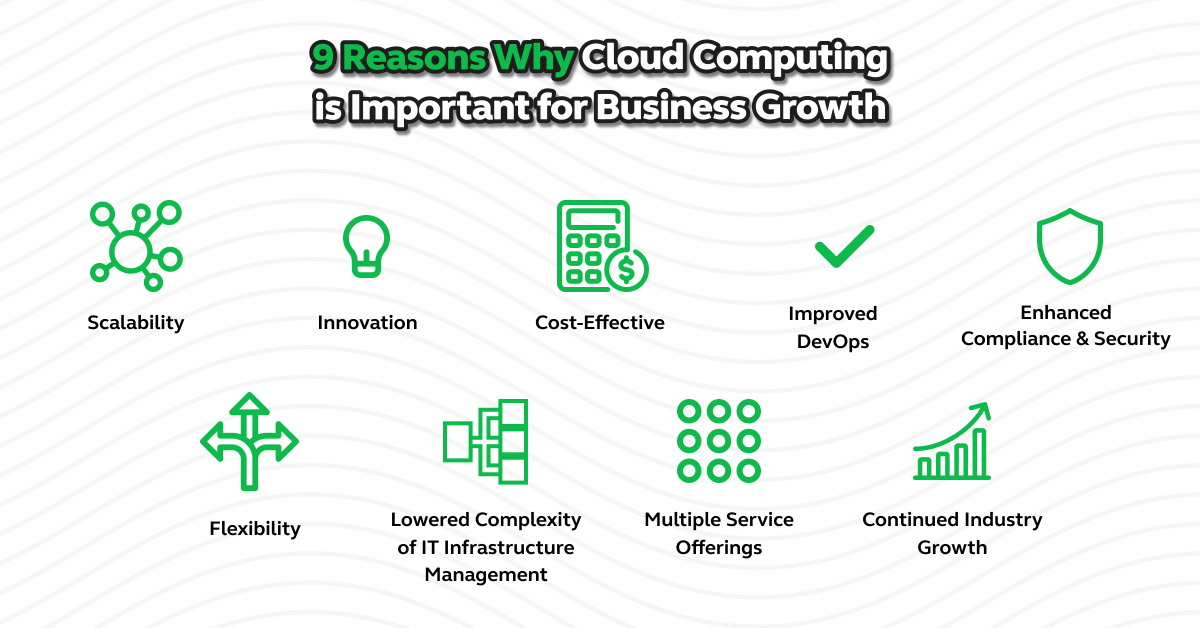
2. Cloud Computing for Simulation and Modeling
Cloud computing has unleashed a new era of possibilities in the world of complex simulations and modeling.
Scalable Computational Power
One of the most significant advantages of the cloud is its ability to provide scalable computational power. Complex simulations and modeling tasks often demand massive computational resources, which can be cost-prohibitive for an individual or even a small team.
With cloud services like Amazon Web Services (AWS), Microsoft Azure, and Google Cloud Platform (GCP), users can access and pay for precisely the cloud computing power they need, making it easier to tackle complex problems.
Accessibility and Collaboration
The cloud allows teams to collaborate seamlessly on modeling projects, regardless of their physical location. Engineers and scientists can access their simulations from anywhere, work together in real time, and share results with stakeholders around the globe. This not only improves efficiency but also promotes knowledge-sharing and innovation.
Speed and Efficiency
Cloud-based resources can be provisioned rapidly, reducing setup time for simulations. Users can spin up virtual machines with pre-configured environments, eliminating the need to set up hardware or install software manually. This accelerates the modeling process and enables researchers to focus on their work rather than infrastructure.
Real-World Examples of Cloud-Based Modeling
1. Automotive Industry – Ford’s Use of AWS
Ford Motor Company utilizes AWS for simulations in vehicle design and manufacturing. They can run crash simulations, optimize vehicle performance, and model manufacturing processes, all while benefiting from AWS’s scalable infrastructure.
2. Aerospace – NASA’s Access to Azure
NASA relies on Microsoft Azure for various modeling needs, including aerodynamics simulations for spacecraft and satellites. Azure’s scalability allows NASA to handle complex simulations with precision.
3. Materials Science – Siemens’ GCP Integration
Siemens, a global leader in materials science, uses GCP for materials modeling and simulation. This enables them to study the behavior of materials under different conditions, helping in the development of advanced materials for various applications.
4. Weather Prediction – IBM Cloud for The Weather Company
IBM Cloud powers The Weather Company’s weather prediction models. These models are critical for weather forecasting and are used by numerous industries, including agriculture, aviation, and disaster preparedness.
The cloud has opened up new frontiers for complex simulations and modeling. Its scalability, accessibility, and efficiency make it an invaluable tool for engineers and scientists in various industries.
The examples above illustrate how cloud-based modeling is playing a pivotal role in automotive design, aerospace innovation, materials science advancements, and even the accuracy of weather predictions.
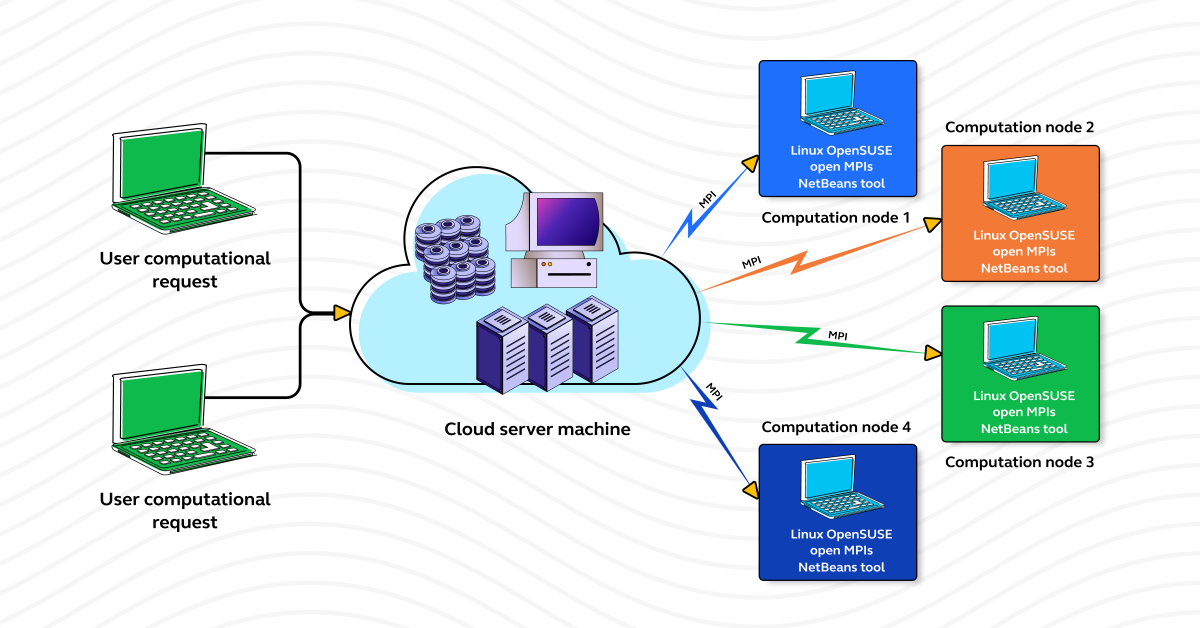
3. Cloud Computing for Internet of Things (IoT) and Edge Computing
The Internet of Things (IoT) is rapidly transforming the way we collect and utilize data, and it’s a technology that wouldn’t be as powerful without the pivotal role of cloud computing.
Data Centralization and Scalability
IoT devices generate vast amounts of data. Cloud computing, offered by platforms like Amazon Web Services (AWS), Microsoft Azure, and Google Cloud, provides the ideal infrastructure to centralize and process this data efficiently. The cloud’s scalability means it can handle data from a few devices to millions, making it the backbone of many IoT systems.
Data Storage and Analytics
Cloud services offer powerful data storage solutions and advanced analytics tools. This enables organizations to store data securely and gain valuable insights from it. Engineers can harness cloud-based machine learning and artificial intelligence to predict trends, perform predictive maintenance, and make data-driven decisions.
Low Latency and Real-Time Processing
While the cloud is excellent for processing and storing data, it’s not ideal for applications requiring low latency, such as autonomous vehicles, industrial automation, and smart cities. Edge computing brings computing closer to where data is generated, reducing the time it takes for data to travel to the cloud and back. Devices at the “edge,” such as IoT gateways and local servers, can process data in real time.
Decentralized Processing
Edge computing decentralizes data processing, reducing the burden on central cloud servers. It’s particularly valuable in scenarios where data needs to be processed quickly and where network connectivity may be unreliable or costly.
Real-World Examples of IoT and Edge Computing in Engineering
1. Smart Cities – Singapore’s Smart Nation Initiative
Singapore’s Smart Nation Initiative utilizes IoT sensors across the city to collect data on various aspects, from traffic flow to environmental conditions. Edge devices process real-time data, while cloud platforms analyze historical trends to optimize urban planning, transportation, and energy efficiency.
2. Industrial Automation – Siemens MindSphere
Siemens MindSphere is an IoT platform that combines edge and cloud computing to enable industrial automation. Sensors on manufacturing equipment collect data, which is processed locally for immediate control and safety. Simultaneously, data is sent to the cloud for long-term analysis, predictive maintenance, and optimization.
3. Agriculture – IBM Watson IoT
IBM’s Watson IoT platform combines edge sensors in fields and farms with cloud analytics. This empowers farmers with real-time data about soil conditions, weather, and crop health. The cloud provides long-term insights and predictions to enhance crop yields and resource management.
Cloud computing plays a pivotal role in processing and analyzing the immense data generated by IoT devices. However, edge computing is emerging as a powerful complement, enabling real-time processing and reducing latency.
The synergy of cloud, IoT, and edge computing is transforming engineering applications, from smart cities to industrial automation, offering efficiency, innovation, and data-driven decision-making.
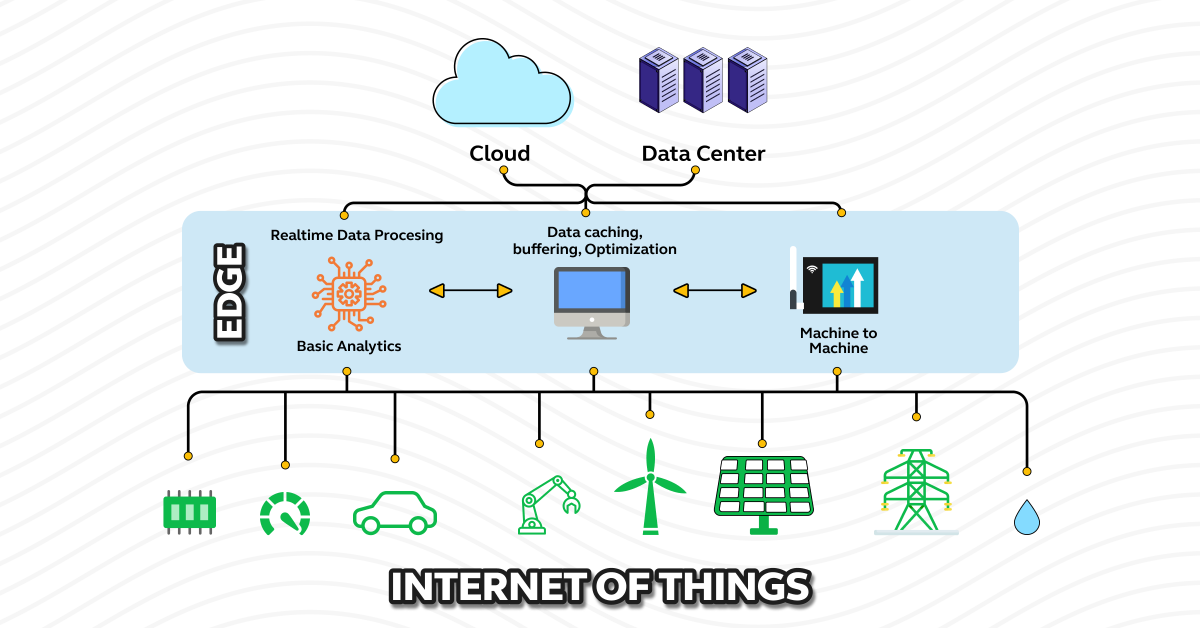
4. Cloud Computing for Data Analytics in Predictive Maintenance
In today’s data-driven world, predictive maintenance has emerged as a game-changer for industries like manufacturing and energy. This approach relies on cloud computing to analyze sensor data and employs machine learning algorithms to predict equipment failures before they happen.
Sensor Data Collection
Predictive maintenance begins with the collection of sensor data from industrial equipment. These sensors monitor various parameters like temperature, vibration, and pressure. Cloud computing platforms like Amazon Web Services (AWS), Microsoft Azure, and Google Cloud provide scalable, secure, and reliable environments for collecting, storing, and processing this data.
Data Storage and Management
The cloud serves as a central repository for vast amounts of sensor data. It ensures that historical data is securely stored, making it accessible for analysis, trend identification, and predictive modeling. Engineers can set up data pipelines to clean, preprocess, and transform the data into a usable format.
Machine Learning Algorithms
Predictive maintenance relies on machine learning algorithms that analyze historical data to detect patterns and anomalies. Cloud-based machine learning services, such as AWS SageMaker or Azure Machine Learning, enable engineers to develop and deploy predictive models that can forecast when equipment is likely to fail.
Real-World Examples of Predictive Maintenance
1. Manufacturing – GE’s Predix
General Electric (GE) utilizes its Predix platform, built on Amazon Web Services, to implement predictive maintenance solutions. GE’s IoT sensors collect real-time data from turbines, aircraft engines, and industrial equipment. Machine learning models on the cloud predict potential issues, enabling GE to schedule maintenance before equipment failure, and reducing downtime and costs.
2. Energy – Ørsted’s Wind Farm Predictions
Ørsted, a leader in offshore wind energy, employs predictive maintenance to optimize the performance of wind turbines. Cloud-based analytics allow Ørsted to monitor the health of turbines, predict maintenance needs, and improve the reliability and efficiency of their wind farms.
3. Manufacturing – Siemens’ Mindsphere
Siemens offers its Mindsphere platform for industrial IoT and predictive maintenance. Sensors on manufacturing equipment gather data, which is analyzed in real-time on edge devices and in the cloud. Predictive maintenance helps manufacturers reduce unplanned downtime, increase productivity, and extend equipment lifespan.
Cloud computing is the backbone of predictive maintenance, enabling the collection, storage, and analysis of sensor data. Machine learning algorithms on the cloud empower engineers to predict equipment failures accurately, reducing downtime and operational costs.
The real-world examples from the manufacturing and energy sectors highlight how these technologies are enhancing efficiency, reliability, and sustainability.
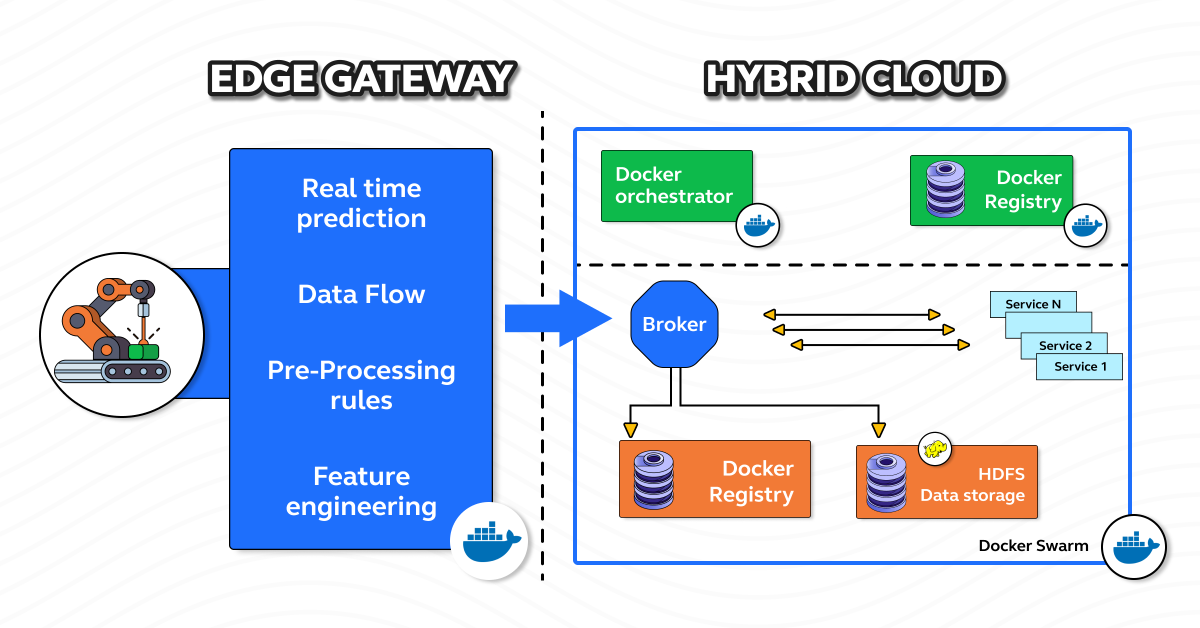
5. Cloud Computing and Infrastructure as Code (IaC) in Cloud Engineering
In the ever-evolving world of cloud engineering, managing and provisioning infrastructure has been a challenge, one that’s met head-on by a groundbreaking concept: Infrastructure as Code (IaC). IaC is revolutionizing the way cloud infrastructure is set up, managed, and optimized.
Infrastructure as Code (IaC) is a practice where infrastructure is defined and managed using code, just like software applications. Instead of manually configuring servers, networks, and other cloud resources, IaC allows engineers to codify their infrastructure needs in scripts or templates. These scripts are then executed to provision and manage the infrastructure in an automated and repeatable manner.
Automation and Consistency
IaC brings automation to the forefront. Engineers can define their infrastructure needs in a code-based format, which can then be version-controlled, tested, and executed. This ensures that the infrastructure is consistent every time it’s provisioned, reducing human errors and configuration drift.
Scalability and Flexibility
With IaC, scaling infrastructure up or down becomes a straightforward process. Engineers can easily adjust parameters in their code, allowing them to handle increased traffic, deploy new services, or adapt to changing business needs without manual, time-consuming adjustments.
Cost Optimization
IaC empowers organizations to optimize cloud costs. Engineers can create policies in their code to automatically shut down or scale resources when they are not in use, minimizing wastage and reducing operational expenses.
Real-World Examples of IaC in Action
1. Netflix – Spinnaker
Netflix employs Spinnaker, an open-source IaC tool, to manage its cloud infrastructure. Spinnaker allows Netflix to automate application deployments, scale resources as needed, and maintain high availability while serving millions of streaming customers.
2. Airbnb – Terraform
Airbnb utilizes HashiCorp’s Terraform to define and provision cloud infrastructure. Terraform’s code-based approach lets Airbnb automate the setup of resources on different cloud providers, ensuring consistency and reliability.
3. GitHub – GitHub Actions
GitHub uses GitHub Actions, its IaC tool, to manage its CI/CD pipelines and cloud infrastructure. GitHub Actions allows developers to codify their workflows, automatically building and deploying applications to the cloud.
Infrastructure as Code (IaC) is a game-changer in cloud engineering. It empowers engineers to automate, standardize, and optimize cloud infrastructure management, enabling scalability, flexibility, and cost-efficiency. Real-world examples from companies like Netflix, Airbnb, and GitHub illustrate how IaC is an essential component in modern cloud engineering, ensuring reliability and agility.
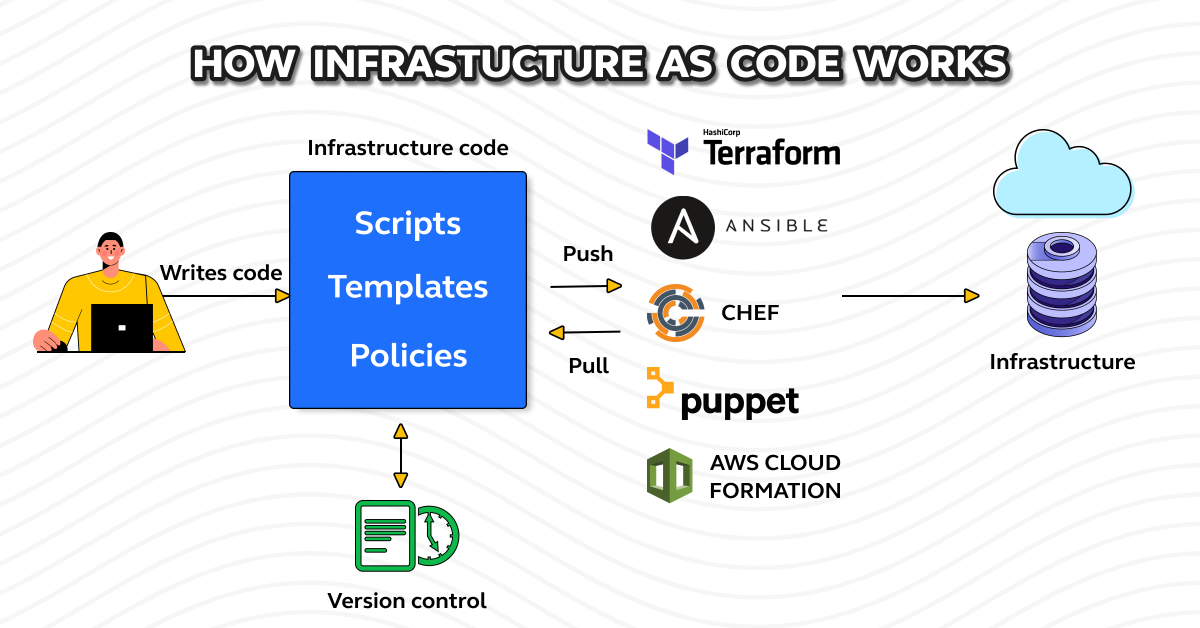
6. Transforming Design with Cloud Computing: Cloud-Based CAD Tools
Computer-aided design (CAD) software has come a long way, and one of the most significant advancements in recent years is its migration to the cloud. This shift has not only transformed how engineers and designers work but has also ushered in a new era of accessibility, collaboration, and innovation.
Traditionally, CAD software was installed on individual computers, limiting collaboration and accessibility. With the advent of cloud computing, CAD applications have migrated to web-based platforms, enabling users to create, edit, and collaborate on designs from anywhere with an internet connection. This shift has unlocked several key advantages:
Accessibility from Anywhere
One of the most significant advantages of cloud-based CAD is the ability to access your designs from anywhere, on any device. This mobility frees engineers and designers from being tied to a specific location or device, allowing them to work on projects even while on the go.
Real-Time Collaboration
Cloud-based CAD tools facilitate real-time collaboration among team members, whether they are across the office or around the world. Multiple users can work on the same design simultaneously, making it easier to exchange ideas, resolve issues, and speed up the design process.
Automatic Updates and Version Control
Cloud-based CAD platforms typically update automatically, ensuring users have access to the latest features and security patches. They also offer version control, allowing users to track changes, collaborate on the same design, and revert to previous versions if necessary.
Scalability and Cost Efficiency
Cloud-based CAD tools are often offered on a subscription basis, reducing the upfront costs of purchasing software licenses. Organizations can also scale the number of licenses up or down based on project requirements, making it a cost-effective solution.
Real-World Engineering Projects with Cloud-Based CAD
1. SpaceX – Collaboration on Starship Design
SpaceX, the aerospace manufacturer founded by Elon Musk, uses cloud-based CAD tools for its Starship project. Engineers from different locations collaborate on the design of SpaceX’s next-generation spacecraft, taking advantage of real-time collaboration and accessibility.
2. Tesla – Automotive Design on the Cloud
Tesla utilizes cloud-based CAD tools for designing its electric vehicles. Teams at various locations can work on the same design, streamlining the production process and making it easier to develop new models and features.
3. Siemens – Solid Edge on the Cloud
Siemens offers Solid Edge on the cloud, enabling companies to take advantage of cloud-based CAD for their projects. It has been used in various industries, including automotive, aerospace, and industrial equipment design.
The migration of CAD to the cloud is transforming the way engineers and designers work, enhancing accessibility, collaboration, and efficiency. Real-world engineering projects at SpaceX, Tesla, and Siemens exemplify the pivotal role that cloud-based CAD tools play in bringing innovation to life.
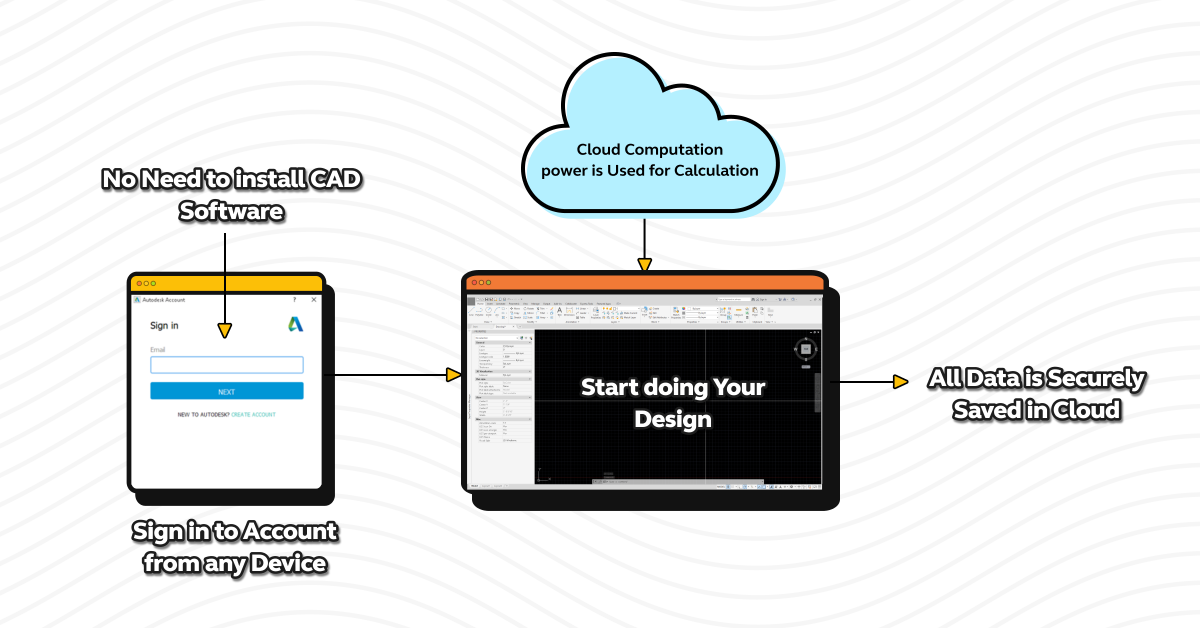
7. Cloud-Enabled Remote Work and Collaboration with Cloud Computing
The advent of cloud computing has not only transformed the way we store and access data but has also revolutionized remote work and collaboration. Engineers are now able to work together on projects from anywhere, unlocking a new level of flexibility, productivity, and adaptability.
Accessibility and Flexibility
Cloud computing has given engineers the freedom to work from virtually anywhere with an internet connection. They can access project files, design software, and collaborative tools without being tied to a specific location or device. This accessibility has become indispensable, especially for teams that need to collaborate across different time zones and geographies.
Real-Time Collaboration
Cloud-based collaboration tools like Microsoft Teams, Slack, and Google Workspace enable engineers to work together in real time. They can communicate through instant messaging, video calls, and document sharing, replicating the experience of working side by side. This fosters better communication, more efficient problem-solving, and smoother project progress.
Version Control and Data Security
Cloud platforms often include built-in version control, which ensures that everyone works on the latest version of documents and design files. Additionally, cloud providers prioritize data security, offering encryption and authentication mechanisms to protect sensitive engineering data.
Real-Time Design Collaboration
Cloud-enabled CAD tools like AutoCAD 360 and Fusion 360 allow engineers to collaborate on designs in real-time. Multiple team members can make simultaneous edits to a project, ensuring that everyone is always on the same page.
Project Management and Communication
Project management software, such as Asana, Trello, or Jira, can be hosted on the cloud. These tools facilitate task tracking, scheduling, and communication among team members, whether they’re working in the same office or from different continents.
Insights from Companies Embracing Cloud Tools During the Pandemic
Zoom Video Communications
Zoom, a cloud-based video conferencing tool, saw a massive surge in usage during the COVID-19 pandemic. Companies worldwide relied on Zoom for virtual meetings, webinars, and collaboration, demonstrating the essential role of cloud-based communication tools in remote work.
Slack Technologies
Slack, a cloud-based team collaboration platform, reported increased demand during the pandemic as companies sought efficient ways to communicate and share information in real-time. It became a vital tool for remote teams, helping them stay connected and productive.
Microsoft Teams
Microsoft Teams experienced substantial growth as it became the go-to platform for remote work collaboration. Its integration with other Microsoft cloud services, like Office 365, made it a seamless solution for engineers and other professionals to work together from various locations.
Cloud computing has revolutionized remote work and collaboration for engineers, offering unprecedented accessibility and real-time communication. The COVID-19 pandemic accelerated the adoption of cloud-based tools, with companies like Zoom, Slack, and Microsoft Teams leading the way.
The impact of cloud-enabled remote work and collaboration is here to stay, empowering engineers to collaborate seamlessly regardless of their physical location.
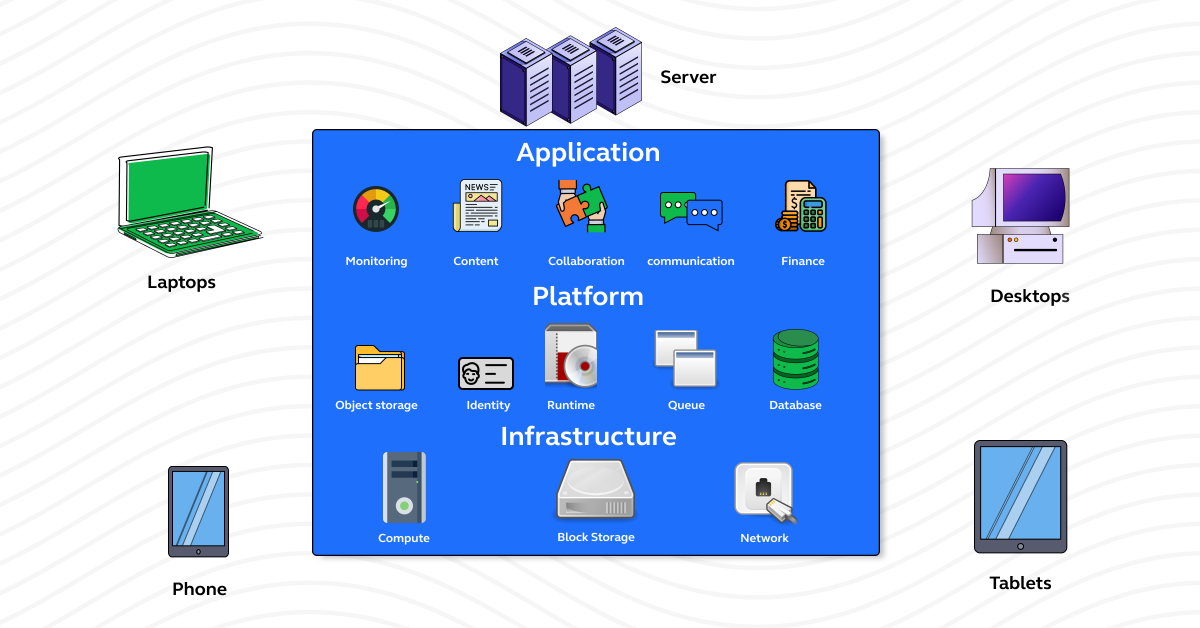
Cloud Computing Challenges and Considerations
While cloud solutions have revolutionized engineering practices, implementing them is not without its challenges and considerations.
Data Security
Challenge: Ensuring the security of engineering data in the cloud is a top concern. Sensitive designs, proprietary information, and intellectual property must be protected from unauthorized access or data breaches.
Consideration: When choosing cloud providers and services, prioritize security features such as data encryption, access controls, and compliance certifications. Additionally, consider implementing a robust identity and access management (IAM) strategy.
Tip: Regularly audit and monitor access to your cloud resources, employ encryption, and keep security protocols up to date.
Cost Management
Challenge: Cloud costs can spiral out of control if not managed effectively. Engineers must optimize resource usage to avoid unexpected expenses.
Consideration: Understand your cloud service provider’s pricing structure. Implement cost management and monitoring tools to track resource consumption. Use reserved instances or spot instances for cost savings, depending on workload characteristics.
Tip: Set budgets, establish cost allocation strategies, and regularly review your cloud costs to identify areas for optimization.
Data Transfer Speeds
Challenge: Transferring large engineering datasets to and from the cloud can be time-consuming, impacting productivity.
Consideration: Assess your data transfer requirements and explore options like direct connections, content delivery networks (CDNs), or cloud storage gateways to enhance data transfer speeds.
Tip: Use compression and parallelization techniques to optimize data transfers, and ensure that your chosen cloud region is geographically close to your users or data sources.
Compliance and Regulations
Challenge: Engineers often deal with regulatory requirements, industry standards, and compliance issues. Meeting these in a cloud environment can be complex.
Consideration: Understand the specific compliance requirements for your industry. Choose cloud providers that offer compliance certifications and build a compliance framework within your cloud infrastructure.
Tip: Regularly audit and document your compliance efforts, and ensure that your cloud provider has data centers or regions that comply with the necessary regulations.
Data Backup and Recovery
Challenge: Protecting against data loss and ensuring quick recovery in the cloud is essential.
Consideration: Implement automated backup and disaster recovery strategies. Leverage cloud-native services or third-party backup solutions to maintain data redundancy.
Tip: Test your backup and recovery processes regularly to ensure they function as intended.
Legacy Systems Integration
Challenge: Integrating existing on-premises systems or legacy applications with cloud solutions can be complex.
Consideration: Choose cloud providers and services that offer integration options, such as APIs and connectors. Plan a gradual migration strategy to minimize disruptions.
Tip: Engage with experts who specialize in cloud integration to ensure a smooth transition.
Cloud solutions in engineering offer immense benefits, but they come with challenges and considerations. By prioritizing data security, effective cost management, optimal data transfer speeds, compliance, data backup and recovery, and legacy system integration, engineers can harness the full potential of the cloud while mitigating risks.
Keep in mind that cloud technology is constantly evolving, so staying informed about the latest developments is essential for success in engineering projects.
Future Trends in Cloud Computing Engineering
As technology continues to evolve, so does the landscape of cloud engineering applications. Several exciting trends are shaping the future of engineering in the cloud.
1. Serverless Computing
Trend: Serverless computing, or Function as a Service (FaaS), is gaining momentum in cloud engineering. It allows developers to focus solely on writing code without managing the underlying infrastructure.
Impact on Engineering: Serverless computing simplifies deployment and scales automatically based on the application’s requirements. Engineers can leverage this technology to create efficient and cost-effective solutions, especially for event-driven applications, IoT, and microservices.
Insights: Serverless Computing with AWS Lambda
2. Integration of Artificial Intelligence (AI)
Trend: AI integration is becoming increasingly prevalent in cloud engineering applications. Cloud platforms are offering AI services that enable engineers to build smart and predictive solutions.
Impact on Engineering: AI integration empowers engineers to create advanced systems with capabilities like predictive maintenance, image and speech recognition, and natural language understanding. These technologies are driving innovation in various engineering domains.
3. Quantum Computing
Trend: Quantum computing, while still in its infancy, is on the horizon for cloud engineering. Cloud providers are exploring quantum cloud services to provide access to quantum hardware and algorithms.
Impact on Engineering: Quantum computing has the potential to revolutionize complex simulations, optimization problems, and cryptography. Engineers can tackle previously unsolvable problems and create highly efficient solutions.
Insights: IBM Quantum Computing
4. Edge Computing Integration
Trend: Edge computing, which extends cloud services to the edge of the network, is becoming integral to engineering applications. It allows processing to occur closer to the data source, reducing latency.
Impact on Engineering: Edge computing is crucial for real-time applications, such as autonomous vehicles and industrial automation. Engineers can leverage this technology to make quick decisions and reduce data transfer times.
5. Sustainable and Green Cloud Engineering
Trend: Sustainability and environmental concerns are driving the adoption of green cloud engineering practices. Cloud providers are focusing on renewable energy and energy-efficient data centers.
Impact on Engineering: Engineers can design eco-friendly applications and systems. By selecting cloud providers committed to sustainability, they contribute to a greener future.
6. 5G and Cloud-Native Technologies
Trend: The rollout of 5G networks and the adoption of cloud-native technologies are transforming engineering applications. The combination of high-speed connectivity and cloud-native architectures offers opportunities for innovation.
Impact on Engineering: Engineers can develop applications that leverage the speed and low latency of 5G, enabling new possibilities in IoT, augmented reality, and real-time data processing.
The future of cloud engineering is marked by exciting trends that promise to redefine the field. These trends, including serverless computing, AI integration, quantum computing, edge computing, sustainability, and the integration of 5G and cloud-native technologies, are opening doors to unprecedented innovation and efficiency. Engineers who embrace these trends will be well-equipped to shape the future of engineering in the cloud.
Conclusion
The message is clear: cloud computing is not just a technological advancement; it’s a game-changer for engineers and businesses. To stay competitive and innovative, it’s essential to explore and adopt cloud solutions by gaining top-notch skills from GUVI’s Cloud Computing Course. Whether you’re modeling complex systems, analyzing data, designing groundbreaking products, or collaborating with teams across the globe, the cloud is your ally in shaping the future of engineering.
As cloud engineering continues to evolve, it offers boundless opportunities to transform ideas into reality and drive progress in ways we’ve never imagined. Embrace the cloud, and together, we can engineer a brighter future.
FAQs
Cloud computing provides scalable computational power, which is essential for complex simulations in engineering. It allows engineers to run simulations more efficiently and quickly. Additionally, it enables collaboration on large-scale simulations among team members located in different geographic areas.
Cloud providers offer a range of security measures, including data encryption, access controls, compliance certifications, and identity and access management (IAM) solutions. These measures ensure that engineering data is protected from unauthorized access and data breaches.
Cloud-based CAD tools offer accessibility, collaboration, and scalability, which can be particularly advantageous for small engineering firms and startups. They provide cost-effective access to advanced design software and facilitate real-time collaboration, leveling the playing field for smaller players in the engineering industry.

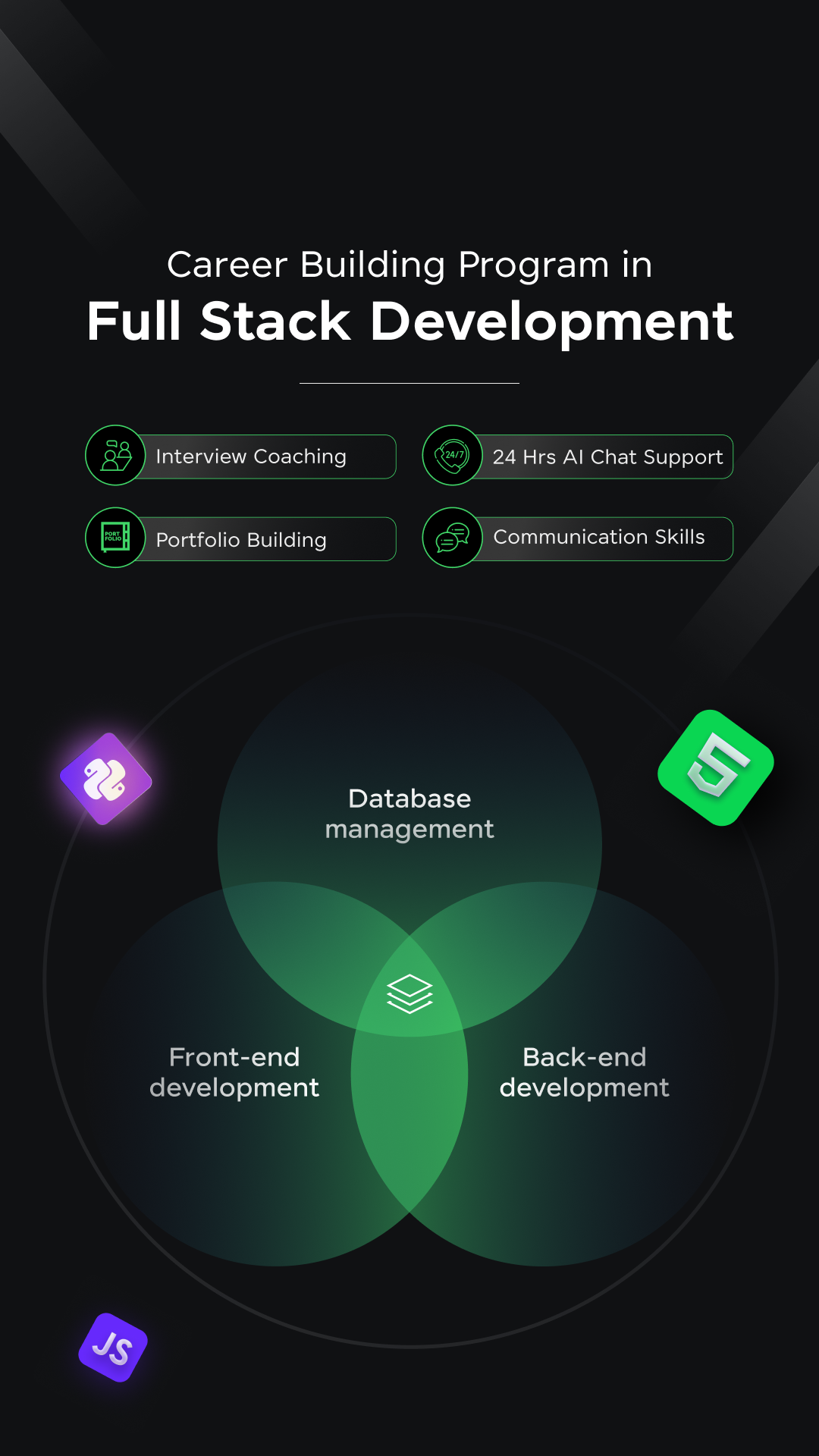

















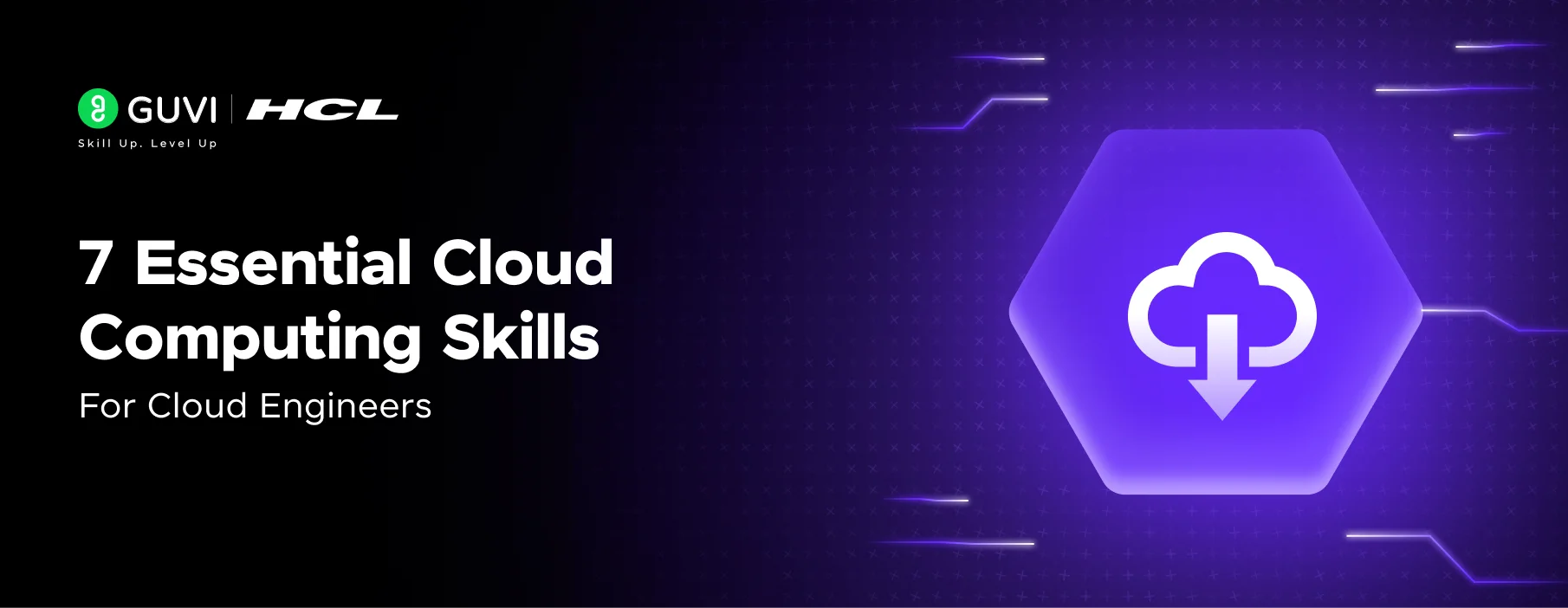
![Top 30 Networking Interview Questions and Answers [Includes All 3 Levels] 11 Networking Interview Questions and Answers](https://www.guvi.in/blog/wp-content/uploads/2025/05/30-Crucial-Networking.webp)



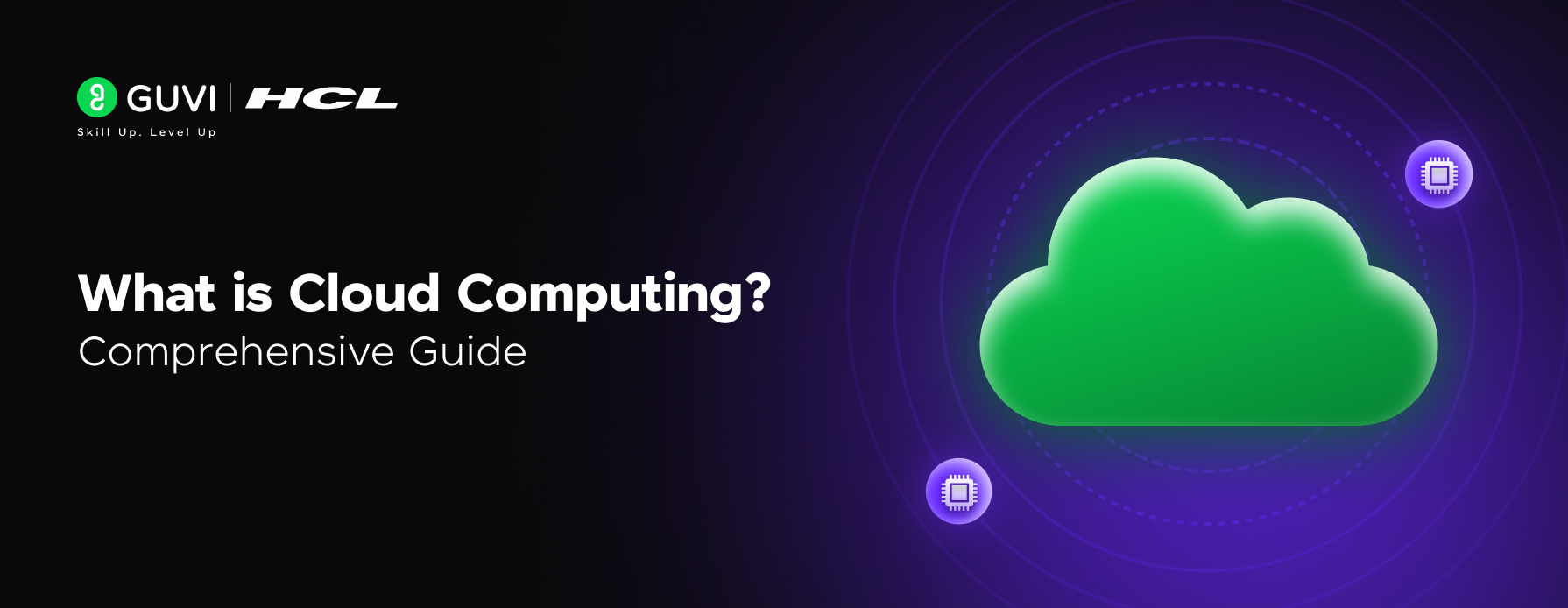
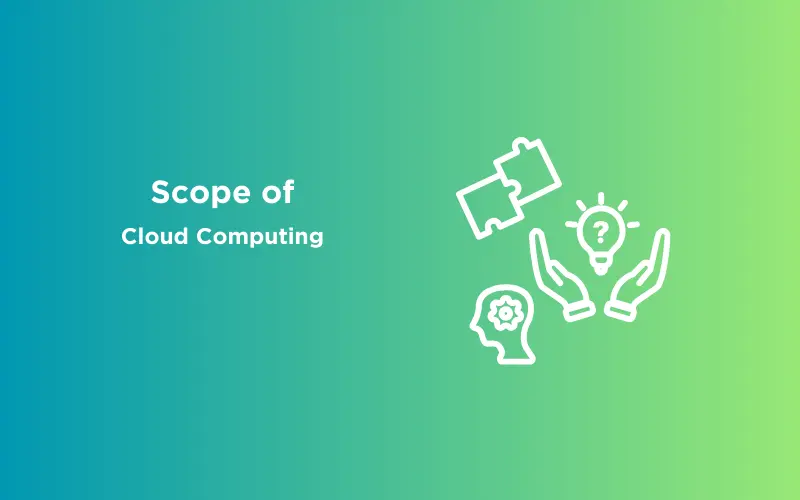
![10 Best AWS Cloud Computing Courses [Free+Paid] 17 AWS Cloud Computing Courses](https://www.guvi.in/blog/wp-content/uploads/2025/07/AWS-Cloud-Computing-Courses.webp)

Did you enjoy this article?